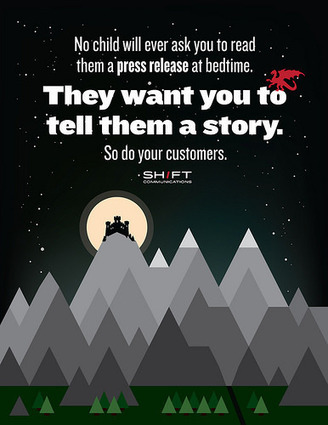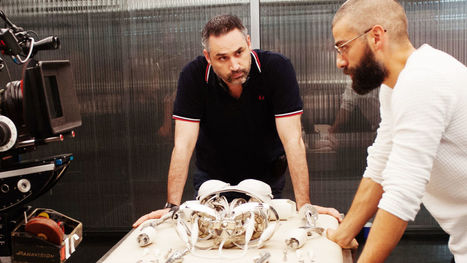It’s a well-documented paradox of modern relationships: Our digital tools allow us to connect in ways that feel both intimate and distant. We can be reached at all times and across great distances, but the ties that bind us are superficial. Quick updates (even the occasional humblebrag) are better than radio silence when th
Get Started for FREE
Sign up with Facebook Sign up with X
I don't have a Facebook or a X account
 Your new post is loading... Your new post is loading...
 Your new post is loading... Your new post is loading...

Jeff Domansky's curator insight,
November 14, 2016 1:39 AM
Whether you're a Nigerian prince or an investigative journalist, a good storyteller can actually compel others to act by manipulating their emotions.

Jeff Domansky's curator insight,
March 29, 2015 10:51 AM
More great resorces and specifically 50+ storytelling tools you can use from 50+Ways.

Bart van Maanen's curator insight,
October 30, 2014 9:49 AM
Aardig verhaal over 5 elementen die het Grote Bedrijfsverhaal zou moeten bevatten. Als deze kapstok maar onzichtbaar blijft en het een echt verhaal is of wordt. 
LaraBadioli's curator insight,
October 30, 2014 10:24 AM
Mostra ad un bambino le tue storie aziendali: se non vorrà nè vederli nè leggerli, non vanno bene. AL contrario, se si appassiona, avrai un nuovo modo tra le mani per emozionare e sentire i tuoi clienti. 
Freeman P Quinn's curator insight,
November 3, 2014 10:24 AM
Much easier said than done: Identifying the Passion, a protagonist, an antagonist, a revelation, and the transformation. |

malek's curator insight,
April 30, 2015 12:32 PM
It all starts here:FOLLOW YOUR INTERESTS, AND THE STORY WILL FOLLOW

John Capecci's curator insight,
November 10, 2014 8:56 AM
Here's what pro storytellers know about the jazz-like approach to improvisational communication.

Lydia Gracia's curator insight,
October 2, 2014 2:15 PM
Une histoire à compléter par vos clients... ce n'est peut être pas la même mais c'est son expérience de vous! 
Michael Williams StoryCoaching's curator insight,
October 5, 2014 3:11 PM
Great storytellers know that by leaving out a lot of unnecessary description, you engage your listener's imagination. "Suggest, don't tell." Give your audience the silence and space to engage with the story. If not, they become passive as you are doing all the imaginative work for them. This article gives some media examples of this in practice.

Michael Williams StoryCoaching's curator insight,
August 8, 2014 5:23 AM
Another useful set of 8 ways to grab your audience's attention at the beginning of a presentation. Again, story is the important thing. Thanks to Gavin McMahon for this. 
Miguel Paul Trijaud Calderón's curator insight,
August 8, 2014 7:30 AM
How to start a presentation. 8 Tips from top TED talks. |

























